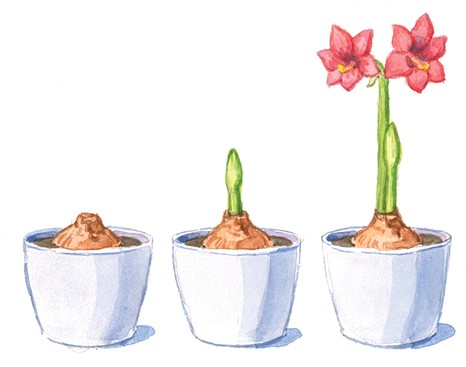Forcing an Amaryllis Bulb
go.ncsu.edu/readext?833017
en Español / em Português
El inglés es el idioma de control de esta página. En la medida en que haya algún conflicto entre la traducción al inglés y la traducción, el inglés prevalece.
Al hacer clic en el enlace de traducción se activa un servicio de traducción gratuito para convertir la página al español. Al igual que con cualquier traducción por Internet, la conversión no es sensible al contexto y puede que no traduzca el texto en su significado original. NC State Extension no garantiza la exactitud del texto traducido. Por favor, tenga en cuenta que algunas aplicaciones y/o servicios pueden no funcionar como se espera cuando se traducen.
Português
Inglês é o idioma de controle desta página. Na medida que haja algum conflito entre o texto original em Inglês e a tradução, o Inglês prevalece.
Ao clicar no link de tradução, um serviço gratuito de tradução será ativado para converter a página para o Português. Como em qualquer tradução pela internet, a conversão não é sensivel ao contexto e pode não ocorrer a tradução para o significado orginal. O serviço de Extensão da Carolina do Norte (NC State Extension) não garante a exatidão do texto traduzido. Por favor, observe que algumas funções ou serviços podem não funcionar como esperado após a tradução.
English
English is the controlling language of this page. To the extent there is any conflict between the English text and the translation, English controls.
Clicking on the translation link activates a free translation service to convert the page to Spanish. As with any Internet translation, the conversion is not context-sensitive and may not translate the text to its original meaning. NC State Extension does not guarantee the accuracy of the translated text. Please note that some applications and/or services may not function as expected when translated.
Collapse ▲If you have never heard of an Amaryllis, please take some time to look them up. They are so gorgeous! They are tropical plants, native to the western Cape region of South Africa. An amaryllis grows from a large bulb and has huge, trumpet-shaped blossoms that can measure 8 inches across! The most common colors that they come in are reds, but there are many varieties out there from pink, peach, white, and even pale green. In our area, they are usually planted inside to be forced to bloom during our holiday season.
To take care of and “force” your amaryllis, here are the steps you need to take.
- Find an amaryllis bulb. You should be able to find them at local hardware stores or garden centers, even some grocery stores have them!
- Find a good pot. These bulbs can be planted in individual pots or several bulbs can be grouped together in a larger container. Make sure whichever pot you chose has a drainage hole in the bottom because Amaryllis roots do not like wet feet.
- Plant your bulb(s). Add a few inches of potting mix to the bottom of the pot and then place the bulb to where the top half of the bulb is exposed. Once your bulb is where you want it height wise, add enough soil to the sides to stabilize the bulb(s). Just make sure that the top portion is still exposed. If you wish, you can add moss or decorative stones around the top portion of the bulb for aesthetics.
- Growing conditions. Place your finished plant in a cool, sunny location in your home and water sparingly, keeping the soil barely moist. It’ll take anywhere from 4 – 12 weeks for your bulb to bloom, depending how far along the bulb was when you bought it, the variety, and the growing conditions after the bulb is planted. Rotating your planter will allow the entire plant to get enough sun and help it grow straight.
- Bloom conditions. When your flowers start to open, move the pot out of direct sunlight, this will lengthen the life of your blooms. As flowers fade, use scissors to snip them off. You can cut each stalk to just above the bulb once all flowers on that stalk have finished flowering. After you plant has finished flowering, you can either add them to your compost pile or save them to plant in the spring.
- Maintenance. To save them for spring, you’ll continue watering like usual where the soil is barely moist and fertilize monthly with standard houseplant food. Leaves will emerge from the bulb for several months which are there to make the energy for next year’s flower bulb.
*Tune back in to our website during March for more info on caring for & re-planting your amaryllis plant. If you have any questions on forcing & caring for your amaryllis, call us at 828-632-4451.






